- Home
- Income Taxes
- Tax Organizer
Tax Organizer
Helps Make Preparing Your Taxes
A Fast & Easy Process
A tax organizer can help by facilitating the process of pulling together your tax information. This basic organizer is designed for new tax or bookkeeping clients and allows you to enter your information right on the screen. (Although you won't be able to save it).
You can then print the completed organizer and fax, mail or hand deliver it to the office. Current clients should contact the office to request a "proforma" organizer that includes prior year information and carryover data.
Click here for your free Client Tax Organizer
Please make sure to fill in the form completely. The tax organizer includes the following categories:
Benefits Of Using Tax Organizers
Using a tax organizer can be a valuable tool for taxpayers to save time and money while ensuring a smooth and efficient tax preparation process. A tax organizer is designed to help individuals gather and organize the necessary information required for filing their tax returns. Here are several ways in which using a tax organizer can benefit you:
- Comprehensive Information Gathering: A tax organizer provides a structured format that will guide you through the process of gathering all the necessary information for your tax returns. It prompts you to provide details related to your income, deductions, credits, and other relevant tax-related information. By having a clear outline, you can ensure you gather all the required documents and information upfront, reducing the need for multiple rounds of document retrieval and minimizing the risk of missing essential details and paying higher tax prep fees.
- Time Savings: With a tax organizer, you can save significant time by having a centralized tool to organize your tax-related information. Instead of searching through stacks of documents or multiple digital files, you can refer to the tax organizer's checklist and fill in the required details. This streamlines the information gathering process and helps you compile your tax-related information more efficiently.
- Accuracy and Minimized Errors: Tax organizers help improve accuracy by providing you with a comprehensive overview of the information needed for your tax returns. By following the organizer's prompts and checklist, you can ensure they provide consistent and accurate information. This reduces the likelihood of errors, omissions, or inconsistencies in your tax returns. By submitting accurate returns, you can avoid potential penalties, audits, or the need for filing amendments, saving both time and money.
- Early Identification of Issues: Tax organizers often include specific sections that highlight common areas of concern or potential deductions. By utilizing these sections, you can proactively identify any tax-saving opportunities or potential issues that require further clarification. This early identification allows you to address any problems promptly, seek professional advice if needed, and maximize your deductions or credits, potentially leading to tax savings.
- Organized Record-Keeping: Using a tax organizer encourages you to maintain a well-organized record-keeping system. By systematically organizing your tax-related documents, receipts, and other supporting materials, you can easily refer to them when needed. This not only saves time during the tax preparation process but also helps you efficiently respond to any future inquiries or audits from tax authorities.
- Efficient Communication with Tax Preparers: When you as a taxpayer use a tax organizer, you are providing your tax preparers with well-organized and comprehensive information. This promotes effective communication between taxpayers and tax preparers, allowing for a smoother and more efficient tax preparation process. By providing clear and complete information, you can reduce the back-and-forth exchanges, ensuring that their tax returns are accurately prepared in a timely manner.
Using a tax organizer can greatly benefit taxpayer clients by saving them time and money while facilitating an organized and accurate tax preparation process. By following the structured format of the organizer, you can gather and provide all the necessary information efficiently, reduce errors, identify potential tax-saving opportunities, and improve communication with your tax preparers. By leveraging a tax organizer, you can streamline your tax preparation process and enhance your overall financial management.
Tax Organizer Main Information Sheet
General Information such as name, address, social security number, dependent information, date of birth, occupation and phone number.
Question Pages 1 and 2
A check off list to show the types of income received at any time during the year.
W-2 Income
List all of your employers including name, address, and employer identification number.
W-2G Income and Estimated Tax Paid
Include name of payer, address, and federal identification number of all gambling winnings. List any federal and state quarterly estimated tax payments made.
Other Income and Adjustments
Including last years state tax refund, unemployment, adjustments such as educator expense, self-employed retirement and health insurance paid, IRA's, Alimony, Tuition and Fees.
Interest and Dividend Income
List all income from forms 1099-INT and 1099-DIV.
Pension and Retirement Income
List pension, IRA distributions, and social security received.
Estate and Trust Income
Include your K-1 information such as name of estate or trust and federal ID number.
Capital Gains and Losses
List all stocks, bonds, and non-business assets. You will need a description, date of acquisition, date sold, sales price, and cost.
Business Income and Expenses (Schedule C)
This is where you will include your self-employment income. Include your business name, federal ID, address, date placed in service, accounting method, income and expenses.
Office In Home Deduction
Include if you run your small business out of your house. You will need to list square footage of area used for business, total square footage of your home, expenses such as mortgage interest, rent, real estate taxes, insurance, repairs and maintenance, utilities.
Business Asset List
List all business asset acquisitions and dispositions, a description, the date acquired, cost, date sold, sales price from bill of sale, prior depreciation schedule.
Itemized Deductions
This is where you list your medical and dental expenses, taxes paid, interest paid, contributions and miscellaneous income tax deductions.
Employee Business Expenses
Include which W-2 job your expenses were incurred for. List expenses such as travel expenses, parking fees, tolls, meals & entertainment, vehicle total mileage vs business mileage.
Child and Dependent Care Expenses
Please list all care providers and the amounts paid to them. Include name, address, EIN, telephone number and amounts paid for each individual child.
I am happy to help you with your tax organizer or if you have any other questions, concerns or need any bookkeeping services. Please use the contact form below and put your question in the comment area.
Also feel free to let me know what you think of my website. Is it suiting your needs? Is there anything else you need help with and would like to see added?
I'm always delighted to get your feedback!
More Helpful Tax Information
- Bookkeeping For Tax Changes
- Business Taxes
- Estimated Tax Payment
- Income Tax Deductions
- Income Tax News
- Income Tax Questions
- Income Tax Resolution
- Online Income Taxes
- Self Employment Tax
- Small Business Tax Services
- Tax Organizer
- Tax Policies For California
- Tax Preparation Services
- Tax Professionals
- Tax Relief
- Tax Trivia
Questions And Answers Pages
- Accounting News Article Contributions
- Accounts Payable Questions
- Accounts Receivable Questions
- Bookkeeping Articles
- Balance Sheet Questions
- Bookkeeping News Article Contributions
- Bookkeeping Questions and Answers
- Chart Of Accounts Questions and Answers
- Funny Accounting Jokes
- Income Tax Deductions Questions
- Income Tax News Article Contributions
- Investment Questions
- Profit And Loss Statement Questions
- Your Testimonials
Tax And Bookkeeping Supplies Stores
- Basic Bookkeeping For Dummies
- Bookkeeping Books
- Bookkeeping Business Software
- Bookkeeping Deals
- Bookkeeping Ledger
- Bookkeeping Software
- Bookkeeping Supplies
- Bookkeeping Tutorials
- Cell Phones
- Computers
- Electronic Supplies
- Finance Magazines
- Office Equipment
- Office Furniture
- Office Supplies
- Quickbooks Accounting Software
Please subscribe to my monthly newsletter, Bookkeeping Basics E-zine. It tells you every month about the new information that I have added, including some great tips and advice from myself and other Bookkeeping Basics readers.
Like Bookkeeping-Basics.net?
- Home
- Income Taxes
- Tax Organizer
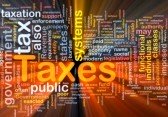
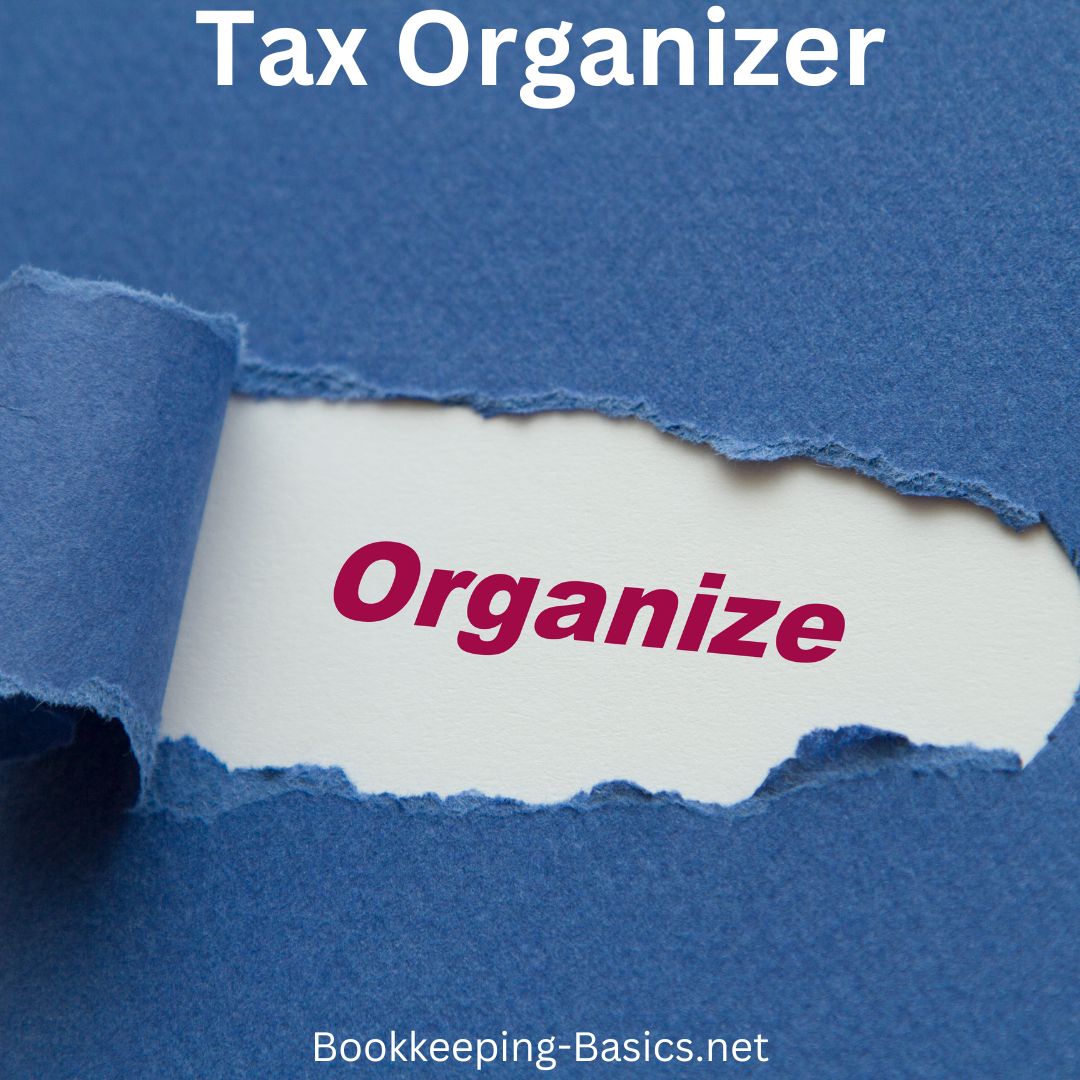



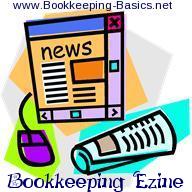



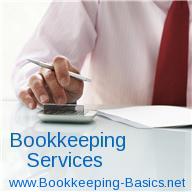
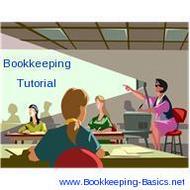
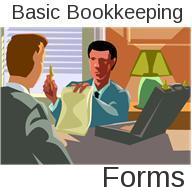


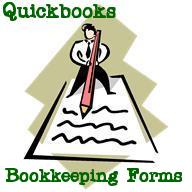
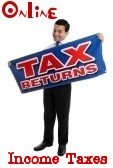
New! Comments
Have your say about what you just read! Leave me a comment in the box below.